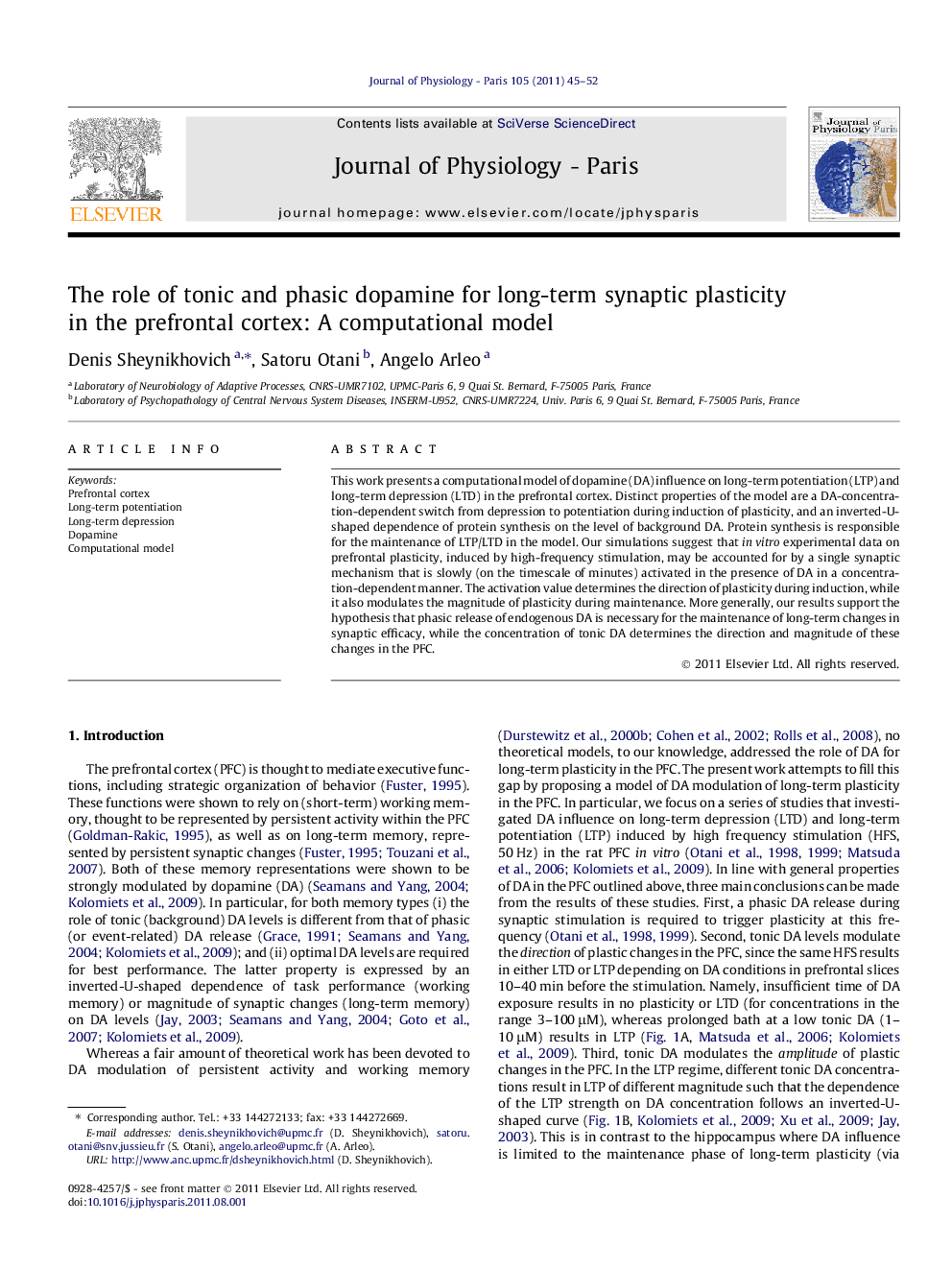| Article ID | Journal | Published Year | Pages | File Type |
|---|---|---|---|---|
| 2842225 | Journal of Physiology-Paris | 2011 | 8 Pages |
This work presents a computational model of dopamine (DA) influence on long-term potentiation (LTP) and long-term depression (LTD) in the prefrontal cortex. Distinct properties of the model are a DA-concentration-dependent switch from depression to potentiation during induction of plasticity, and an inverted-U-shaped dependence of protein synthesis on the level of background DA. Protein synthesis is responsible for the maintenance of LTP/LTD in the model. Our simulations suggest that in vitro experimental data on prefrontal plasticity, induced by high-frequency stimulation, may be accounted for by a single synaptic mechanism that is slowly (on the timescale of minutes) activated in the presence of DA in a concentration-dependent manner. The activation value determines the direction of plasticity during induction, while it also modulates the magnitude of plasticity during maintenance. More generally, our results support the hypothesis that phasic release of endogenous DA is necessary for the maintenance of long-term changes in synaptic efficacy, while the concentration of tonic DA determines the direction and magnitude of these changes in the PFC.
► Tonic dopamine influences magnitude and direction of long-term plasticity. ► Phasic dopamine triggers plastic events. ► We model synaptic plasticity in a prefrontal neuron under influence of dopamine. ► We propose different roles of tonic and phasic DA during induction and maintenance.
